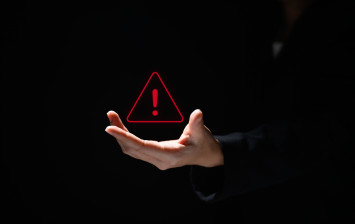How to Handle the Spike in Referral Spam Traffic from Poland
With the recent spike in referral spam traffic from Poland, webmasters across the US are scrambling for solutions to the unwanted traffic while Google has been slow to respond.

For many law firm marketing companies, the answer is found in Google’s Core Web Vitals: a set of analytic tools that track URL performance. This report can help improve site load time, clarify search engine optimization (SEO) issues, and improve your marketing strategy at a page-performance level.
Why should law firms care about page performance? Studies show that improving your Core Web Vitals boosts both user engagement and reach to potential clients. According to Google, when a website meets Google’s Core Web Vitals standards, prospective clients (site users) are 24% less likely to abandon page load because of slow performance. Improving your Core Web Vitals can positively affect your conversion rate, page views, advertising revenue, and domain rankings.
Your online marketing tactics hinge on the functionality of your website—and Google’s Core Web Vitals are an easy way to see how your website is performing.
Google’s Core Web Vitals, first announced in 2020, report groups URL performance by status (Poor, Needs Improvement, and Good), metric type (CLS, FID, INP, and LCP), and URL group based on similar websites. Google considers three specific metrics crucial to a page’s user experience:
Largest Contentful Paint (LCP): A measurement of page-load performance,
First Input Delay (FID): A measurement of page interactivity, and
Cumulative Layout Shift (CLS): A measurement of visual stability on the website.
All three metrics can help website owners/developers recognize issues with their page performance and help get their valuable content in front of people who need their legal services.
This recent announcement concerns the second metric listed above: First Input Delay (FID). Google announced that it will be replacing the FID as a Core Web Vital with an Interaction to Next Paint (INP) metric. This change will take place on March 12, 2024, with the goal of providing a more comprehensive metric of website responsiveness. Google will reward websites with minimal page delay, easy navigability, and a positive user experience.
The Interaction to Next Paint (INP) metric measures the delay users experience when visiting your website: any time gap between a user’s interaction—clicking on a link, for instance—and the resulting visual change (also called the “next paint”). Generally speaking: the shorter the delay, the better the user experience. This applies to blog posts, social media marketing funnels, contact information pages, and so forth.
The INP metric will impact search rankings, so it is important to be prepared before Google makes the switch. If your website offers a seamless user experience with immediate visual feedback between pages, it will probably receive a boost in rankings; if your website lags, stalls, or fails to offer immediate feedback based on a user’s interactions with it, you can expect to drop in the rankings as a result.
The most important thing you can do to prepare for this change is: determine if your website’s INP meets Google’s “good” threshold. If your website is in the 75th percentile or higher, you should be fine. You can do this by looking up your domain name on PageSpeed Insights and fixing any problems flagged. This essentially means: identifying any slow interactions and fixing them on the back end.
Google offers this list of guides to help you make the necessary adjustments:
Optimize long tasks to improve page load time, particularly if you are running Javascript.
Check and remove excessive script evaluation tasks if you're experiencing a lot of activity during page load.
Optimize your input delay if it's taking a long time for interactions to process during page load.
Avoid complex layouts and minimize DOM size wherever possible, as these require considerable rendering work.
Reduce the scope/complexity of style calculations, as they can slow down your website’s response time.
Be mindful of how much of your website renders through Java, as this can affect user interactivity.
Trial Guides Digital Marketing is here to help you improve your firm’s website and stay ahead of the competition. With specialty services aimed at improving everything from webpage performance to social media presence, our team is here to help you stay ahead of the competition. Contact us today for a free page audit and consultation.

With the recent spike in referral spam traffic from Poland, webmasters across the US are scrambling for solutions to the unwanted traffic while Google has been slow to respond.